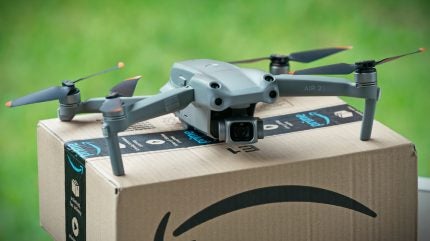
Amazon has streamlined its drone delivery service, enabling customers in eligible locations to receive lightweight items in under an hour.
The update to its Prime Air programme marks a major development in how online shopping orders are fulfilled, aiming to reduce waiting times and increase delivery efficiency.

Discover B2B Marketing That Performs
Combine business intelligence and editorial excellence to reach engaged professionals across 36 leading media platforms.
How the drone delivery system works
Shoppers using the Amazon website or mobile app can now select drone delivery at checkout, provided their location is supported and the item weighs five pounds or less.
More than 60,000 products are currently eligible, including mobile phones, wireless earbuds, smart doorbells, and kitchen gadgets.
To ensure precision, customers choose a delivery spot on their property—such as a driveway or back garden—during the order process.
Once set, the location is saved for future deliveries and can be updated at any time. Upon dispatch, Amazon calculates a near-exact arrival window, usually within five minutes of the estimated time.

US Tariffs are shifting - will you react or anticipate?
Don’t let policy changes catch you off guard. Stay proactive with real-time data and expert analysis.
By GlobalDataAdvanced drone mapping and automation
The new system removes the need for physical surveys of delivery locations. Instead, Amazon uses digital maps to pre-identify suitable “delivery zones” free from obstacles like buildings or trees.
Within these zones, the company assigns “delivery points” at each qualifying address—areas verified to be safe and accessible for drones.
The recently introduced MK30 drone supports the automated process. Unlike previous models that required a QR code on the ground, the MK30 navigates directly to the delivery point, verifies the location, and releases the package from about 13 feet above the ground.
Weather checks and safety protocols in place
Drone deliveries are only completed when the area is clear of pets, vehicles, or people. The onboard perception system scans the surroundings in real time to detect any new obstructions not shown on satellite imagery.
Weather also plays a role in determining availability. Deliveries are restricted during adverse conditions, though light rain is acceptable. A 75-minute forward-looking forecast tool helps the system decide whether drone delivery will be possible within the hour.
If conditions aren’t suitable, customers are automatically offered standard delivery options instead.
With these updates, Amazon’s drone programme continues to evolve as part of the broader trend in fast delivery technology, balancing automation with safety and customer convenience.





